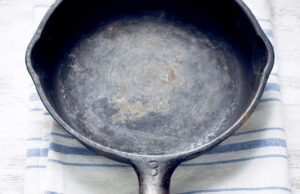As an Amazon Associate, I earn from qualifying purchases at no extra cost to you.
How to Use Finish Dishwasher Cleaner for a Truly Fresh Machine
Yesterday I opened my dishwasher and noticed a strange smell, almost like old food stuck somewhere deep. It reminded me how easily dishwashers do everything for us, yet we forget they also need cleaning. So I pulled out a Finish cleaner bottle, and it hit me—many people never learn how simple this is. Curious how to use it properly so your dishwasher keeps shining too?
First clear out dirty dishes so the cleaner works on your machine, then remove the sticker from the Finish cleaner cap carefully to avoid spills. Next, place the bottle upside down in the rack without opening the cap further, and run a hot cycle to dissolve grease and mineral buildup. After the cycle, remove the empty bottle and wipe around the filter and door edges for a complete refresh.
Preparing Your Dishwasher Before Using Finish Dishwasher Cleaner
Sometimes we rush into cleaning products expecting magic instantly. Yet preparing the dishwasher first makes such a difference. Imagine trying to mop a kitchen floor covered with crumbs; the cleaner just spreads the mess. The same happens inside your dishwasher if dishes and food bits stay inside. So always start by clearing everything out, almost like giving the cleaner a clean stage to work on.
Next, take a quick look around the bottom drain area. You might find pasta, tiny bones, or seeds sitting around. Gently remove visible bits, because leaving them means they could block water flow when the cleaner runs. I once ignored a popcorn kernel stuck near the filter, and it rattled through the whole cycle—so now I always check first. You don’t need tools, just a quick peek and wipe with a paper towel.
Also, wipe the door edges and gasket area. These spots collect oil from plates and hands, and the cleaner can’t reach here well. A simple cloth or sponge once over helps more than you think. It adds maybe 30 seconds, yet the result feels way fresher. You may even wonder how something so small mattered so much.
Lastly, make sure the spray arms can move freely. Sometimes utensils fall through racks or tiny bits get stuck in spray arm holes. Spin the arms gently and poke out any clogged holes with a toothpick. Nothing fancy, just thoughtful prep so your cleaner works at full power, like tuning a car before driving a long trip.
• Remove all dishes
• Check drain area for food bits
• Wipe door edges and gasket
• Clear spray arm holes if blocked
Removing the Seal on the Finish Bottle the Right Way
The cap on the Finish cleaner bottle has a small removable sticker seal, and handling it right matters more than most people think. I once peeled it fast and splashed cleaner on my hand, which felt unpleasant and smelt like heavy detergent. So now I take it slow and careful. Hold the bottle firmly, peel the seal smoothly, and don’t shake the bottle. It’s surprising how a small step like this saves mess and stress.
Always make sure your hands are dry before opening it. Wet or soapy hands make the bottle slippery, and dropping it wastes cleaner and creates a cleanup chore you really didn’t plan for. Sometimes we rush thinking it’s just a sticker, but these products have concentrated cleaning liquid inside. Treating it carefully prevents spills and gives you confidence you’re doing it right.
After removing the seal, avoid squeezing the bottle. The cleaner is meant to dispense itself during the cycle, and touching the cap further might break the mechanism. Think of it like those yogurt drink bottles with a foil lid—once you remove the seal, the rest is set. If you mess with the top, the product might leak before the cycle even starts.
Finally, take a second to check the bottle. If the seal didn’t peel cleanly, use a small corner of tissue to remove leftover pieces. It sounds tiny, but anything blocking the opening could stop the cleaner from releasing correctly. So treat this part as a calm moment, almost like opening a delicate package before a satisfying clean.
• Peel seal slowly
• Keep hands dry for grip
• Do not squeeze or twist cap
• Ensure opening is fully clear
Positioning the Cleaner Bottle in the Dishwasher
Once the seal is off, placing the bottle correctly makes all the difference. I used to think any rack worked, but putting it upright makes it ineffective. Instead, place the bottle upside down in the bottom rack, secure in a prong or holder space. It should sit firmly and not wobble. Think of placing a baby bottle upside down to drip dry—same idea, no tipping allowed.
Always avoid placing it near the spray arms so they move freely. That movement distributes cleaner everywhere. One time I set it too close, and the arm bumped the bottle constantly, making a loud clacking noise. Not dangerous, but annoying for a whole cycle. So always test-spin the arms before starting the machine. It’s one of those tiny habits that feel oddly satisfying.
Also, remove utensil baskets if they block stable placement spots. Some dishwashers have tight rack spaces, so shifting around items helps. It feels a bit like Tetris sometimes, searching for the perfect fit, but once you find it, you’ll always remember the right corner. And once placed right, the bottle looks almost funny sitting upside down like a little cleaning rocket waiting to launch.
Lastly, double-check no loose items remain inside. Even though the dishwasher is empty, sometimes we find a stray measuring cup or baby spoon hiding in the corner. Removing them makes sure the cleaner works only on internal surfaces. Plus, cleaner residue on forgotten items is not nice to wash off. So a quick glance helps keep things tidy and efficient.
• Bottle goes upside down
• Avoid spray arm interference
• Remove obstacles or utensil baskets
• Ensure dishwasher totally empty
Choosing the Best Cycle for Finish Dishwasher Cleaner
The cycle you select affects how well Finish cleaner works. A hot cycle always performs best because heat melts grease and dissolves minerals faster. Most dishwashers have a heavy or intensive setting that uses hotter water and longer wash times. If yours does, choose that. It’s like washing greasy pans; warm soapy water always wins over cold.
Avoid quick or eco cycles for this cleaning. Those cycles save water and time but don’t get hot enough to break down buildup. I remember trying a quick wash once thinking I’d save time, and honestly nothing changed. The smell stayed, and the walls felt greasy. Lesson learned—use the good, strong cycle. It’s worth waiting for the real clean.
Some machines have a “machine clean” setting, and that’s ideal. But not everyone has it, so don’t stress. If you only have normal or auto modes, pick the longest and hottest. It’s like running a deep-clean laundry setting instead of a light refresh. This small choice transforms the results and makes your dishwasher look almost new again.
Finally, start the cycle and walk away. Don’t open the door mid-wash; it interrupts the process and cools water temperature quickly. Instead, let it finish fully and wait a few minutes after the beep so steam settles. When you finally open it, the warm, clean smell will feel rewarding. Almost like opening the oven to fresh bread—only this time, it smells like freshness and not food.
• Select hot or intensive cycle
• Skip quick or eco mode
• Machine clean setting works best
• Let full cycle finish without interruption
Post-Cycle Actions for the Best Results
Once the dishwasher finishes, don’t rush to remove the bottle. Wait a minute or two so steam eases off. Opening fresh steam feels harsh and a little surprising, like opening a boiling pasta pot too fast. Instead, give the machine a moment, then take out the empty bottle. It will be warm, so hold it gently.
Next, wipe the dishwasher door edges and gasket again. The cleaner softens grime, so wiping now picks up loosened residue easily. Think of how steam loosens grime on shower walls—it’s similar. A quick microfiber cloth swipe leaves everything smoother. You may even notice grime on the cloth, and that’s proof your dishwasher needed this.
Also, clean around the filter area. You don’t need to remove the filter every time, but if you haven’t in a long while, it’s worth doing today. Food bits and grease sometimes harden here, and the cleaner softens them nicely. Twist out the filter, rinse in warm soapy water, and return it snug. It gives a little satisfaction knowing it’s spotless down there.
Lastly, leave the dishwasher door slightly open for an hour. This helps moisture escape and prevents new odors from forming. Just a tiny crack works. I once forgot and closed it immediately, and the inside felt damp later, not fresh. A bit of airflow keeps everything dry and pleasant, just like airing out laundry after washing.
• Let steam settle before opening
• Wipe edges and gasket
• Rinse filter if dirty
• Leave door slightly open to air out
Maintaining a Clean Dishwasher After Using Finish
Using Finish dishwasher cleaner gives an amazing fresh reset, but tiny habits extend that clean feeling. For example, scrape large food bits before loading dishes. You don’t need to pre-wash, just prevent chunky leftovers. I once loaded bowls after pasta night, and tomato seeds collected in the filter. Small step upfront saves more work later.
Also, run hot water at your sink before starting dish cycles. This primes your dishwasher to fill with hot water immediately, improving cleaning and preventing greasy residue. It feels like warming up your car in winter; things just run better when they start warm. Many people skip this, yet it’s one of the simplest tricks.
Another habit is wiping the door seal weekly. Grease from fingers or food steam gathers there, and ignoring it leads to odors. I keep a small sponge under my sink, and every Sunday I just swipe around the rubber edges. Takes ten seconds, and honestly feels like tidying a secret hidden corner. Those tiny routines build fresh results.
Lastly, use Finish dishwasher cleaner once a month. That rhythm keeps limescale and grease from building up. If you live in a hard-water area, twice monthly helps even more. Think of it like brushing your teeth regularly—one deep clean doesn’t last forever. Keeping a small reminder makes your dishwasher work longer, shine brighter, and smell fresher.
• Scrape heavy food before loading
• Run hot sink water first
• Wipe gasket weekly
• Use Finish cleaner monthly
Final Thoughts
Keeping a dishwasher fresh feels easy once you know the routine. A little prep, the right Finish cleaner steps, and simple habits give long-lasting sparkle and no smells. It’s comforting knowing the place that cleans your dishes stays clean too. With small care moments, your machine runs smoother, dishes shine brighter, and kitchen chores feel calmer and faster every day.
| Task | What to Do | Why It Matters |
|---|---|---|
| Empty dishwasher | Remove all dishes before cleaning | Cleaner reaches all surfaces |
| Remove seal | Peel slowly, don’t squeeze bottle | Prevent spills and proper release |
| Place bottle upside down | Bottom rack, stable spot | Allows full dispensing |
| Choose hot cycle | Intensive or machine-clean mode | Breaks grease and limescale best |
| Wipe door edges | After cycle wipe gasket | Removes loosened residue |
| Clean filter | Rinse in warm soapy water | Improves drainage and smell control |
| Leave door open | Air dry for 1 hour | Prevents moisture and odors |
| Repeat monthly | Use Finish regularly | Maintains machine performance |
Frequently Asked Questions (FAQs)
Is it safe to use Finish dishwasher cleaner often?
Yes, it is safe to use regularly, and monthly cleaning keeps your dishwasher performing well. Manufacturers design these cleaners to be gentle on internal parts while still strong on grease and limescale. Using it often prevents buildup, which means your dishwasher doesn’t struggle to spray water or drain. If you live in a hard-water area or cook frequently, using it every two weeks helps even more. Think of it like brushing your teeth daily; maintenance prevents bigger issues later, and you enjoy clean dishes without extra effort.
Can I use Finish dishwasher cleaner with dishes inside?
No, you should never run the cleaner with dishes inside, because the formula focuses on machine cleaning, not dishwashing. If used with dishes, residue could stay on plates, which isn’t ideal for safety or taste. Instead, always run the cleaner alone so it works on internal parts without distractions. You might think you’re saving time, but running two separate cycles really pays off in cleanliness and peace of mind. After cleaning, wash dishes normally like usual—it keeps everything hygienic and your dishwasher healthy.
Is it okay to run a short cycle with the cleaner?
Using a short cycle seems tempting when you’re in a hurry, but it won’t give you proper results. Finish cleaner performs best when water stays hot for a longer time, because heat melts greasy deposits and scale more effectively. A short or eco cycle doesn’t allow enough heat or time to clean deep, so you might not smell freshness afterward. It’s similar to washing clothes in cold water when they’re really dirty—yes, the machine runs, but the cleaning power just isn’t the same. Always choose the hottest, longest cycle available.
Can I use Finish cleaner if my dishwasher smells bad?
Yes, this is actually one of the best times to use it. When odors appear, it’s usually because grease hides in corners or food particles sit near the filter. Finish cleaner breaks those down and leaves a fresh smell behind. Before starting though, remove visible food bits so the cleaner reaches deep spots better. After the cycle, wipe the gasket and filter area. You’ll notice a big difference, and it often fixes smells without needing any other product. It’s a quick way to reset a smelly dishwasher.
Is it necessary to remove the sticker seal?
Yes, always remove the seal, because it lets the cleaner release during the cycle. If you forget, the product can’t do anything, and you’ll just waste water and time. Peel gently, avoid squeezing the bottle, and check there’s no sticker part stuck on the opening. Think of it like opening a juice bottle—you remove the inner seal so you can drink it. Same idea here, just for your dishwasher. Doing this small step correctly makes sure the whole bottle works exactly as intended.
Can I place the cleaner bottle anywhere?
No, placement really matters. Always put it upside down in the bottom rack, where water hits it most efficiently. If placed sideways or in the wrong rack, it might not open properly, or it could block spray arms. I once placed mine on the top rack, and barely any cleaner released, so the inside looked the same after. Bottom rack gives gravity and water flow the perfect angle. A quick check before closing the door saves frustration and gives better cleaning power.
Do I need to clean the filter after using Finish cleaner?
You don’t need to every single time, but doing it occasionally helps a lot. Finish cleaner softens grime around the filter, so rinsing it after a cleaning cycle makes the job easy. Simply twist and lift the filter, rinse with warm soapy water, and return it. When you skip this long-term, food particles sit there and cause odors or slow drainage. So even if it’s not required every time, taking a minute occasionally keeps everything fresher and more efficient.
Is it okay to use vinegar instead of Finish dishwasher cleaner?
While vinegar helps with some household cleaning, it’s not recommended for dishwashers long-term. Vinegar is acidic and can damage rubber seals over time, leading to leaks or weaker cleaning performance. Finish cleaner is designed for internal dishwasher parts and melts grease safely without harming components. If you’ve used vinegar before, no worries, but switching to a purpose-made cleaner keeps your machine lasting longer. Think of it like choosing car oil—you could improvise, but the right product truly protects your investment and works better.




